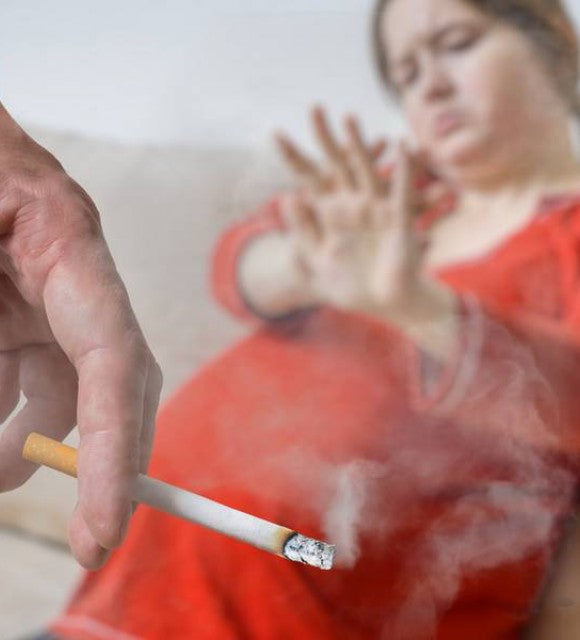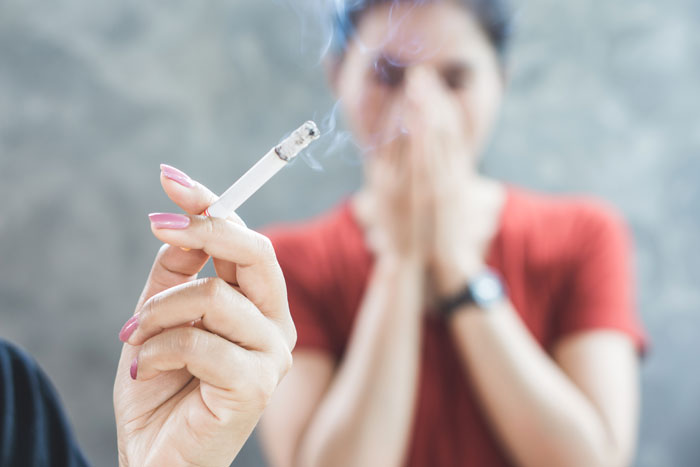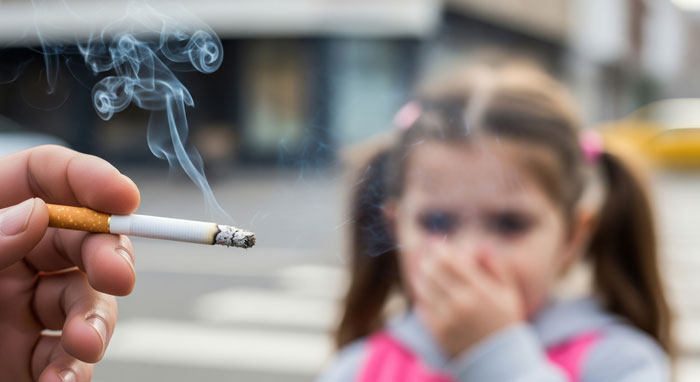
What is passive smoking? Definition and explanations
What is passive smoking?
Secondhand smoke is considered the primary cause of household air pollution, and it's also the most dangerous form. It's important to know that prolonged exposure to cigarette smoke in a frequently used space is more harmful to your health than air pollution.
Passive smoking affects non-smokers. According to numerous studies, when they are continuously exposed to cigarette smoke, they can develop several cardiovascular disorders, respiratory infections, asthma, and even lung cancer.
Secondhand smoke-related disorders mainly occur when a non-smoker directly inhales large amounts of cigarette smoke. This can occur, for example, when a smoker smokes at home with the windows closed.
When a person smokes a cigarette, there are three types of smoke:
- Primary smoke: This is the smoke inhaled by the smoker himself. Even if it passes through a filter, 4,000 toxic components can pass through, including 50 known to be carcinogenic.
- Environmental smoke: This refers to the smoke produced by the smoker, but also to the smoke released from cigarettes. The latter is highly toxic because it does not pass through a filter.
- Thirdhand smoke: These are small particles that cling to clothing and furniture. They pose a real danger to babies and young children.
What is a passive smoker?
A passive smoker is simply someone who is exposed to tobacco, but is not a smoker. They involuntarily breathe in all the cigarette smoke. A passive smoker is 25% more likely to develop various health conditions such as heart disease and asthma.
Cigarette smoke is extremely dangerous, even within the first few seconds of exposure. Tobacco contains hundreds of chemicals that are highly toxic to the human body. Fifty of these chemicals are known to be carcinogenic.
All passive smokers are exposed to the risks associated with cigarette smoke. However, vulnerable individuals, such as children , newborns, pregnant women and the elderly, are more exposed to the dangers of passive smoking.

Passive smoking and electronic cigarettes
These days, more and more people are switching from traditional cigarettes to e-cigarettes. Naturally, e-cigarettes are just as dangerous to the smoker's health, but they pose less of a risk of secondhand smoke because the smoke released is vapor. While vapor is less harmful than tobacco, it's important to be aware that it contains various chemical components that can be toxic, especially for vulnerable people. Therefore, it's best to remain vigilant even when using an e-cigarette.
The health risks of passive smoking
First of all, passive smoking is very disturbing; a non-smoker does not necessarily want to breathe cigarette smoke, because it is very unpleasant.
The first negative health effect of secondhand smoke is irritation of the upper respiratory tract, especially the sinuses and nose. You will feel discomfort and may feel like coughing more frequently. Then, when the smoke reaches your lungs, you risk developing serious respiratory illnesses that can lead to lung cancer. There may also be deterioration of the cardiovascular system.
It's important to know that the dangers of secondhand smoke are much more serious in infants and young children. Smoking near an infant increases the risk of sudden and unexplained death. Children whose parents smoke at home are more prone to eye, throat, and nose irritations and are more likely to develop ear infections and nasopharyngitis. They are also more likely to develop severe forms of asthma, as well as respiratory infections such as bronchitis and pneumonia.
The risks of passive smoking on pregnant women
Pregnant women are quite fragile, which is why they are more likely to suffer the negative effects of exposure to cigarette smoke. Furthermore, tobacco smoke contains carbon monoxide, which, in addition to other toxic substances, can cause a lack of oxygenation in the fetus.
According to experts, the risk of the fetus being less oxygenated is very low, but it does exist. This risk increases when the expectant mother is repeatedly, prolongedly, and intensely exposed to cigarette smoke. This is why you should remain cautious if you are pregnant and stay away from areas where there are smokers. If your partner smokes at home, he or she should get into the habit of doing so outside or leaving the windows open to limit the risks.
It's important to remember that cigarettes contain more than 4,000 toxic chemicals, and smoking while pregnant is more serious than secondhand smoke. Indeed, it can pose numerous risks to the health of the unborn baby, and even to the progress of the pregnancy.

Fight against passive smoking
If you are a smoker, in order to avoid exposing others, especially vulnerable people and children, to the consequences of smoking, it is best to always smoke outside, in a space where ventilation is available, such as on a balcony or in a garden. If a smoking couple is expecting a baby, the mother-to-be should stop smoking to protect her health and that of the baby, and the partner should also stop smoking to avoid exposing their child to smoke.
Combating passive smoking is achieved through awareness; non-smokers can do nothing but stay away from people who smoke. Fortunately, these days, we notice that smokers systematically stay away from others, especially children, in order to smoke. If you are a smoker and you live with non-smokers, get into the habit of not smoking at home to protect their health.
To combat passive smoking, the Evin Law was enacted in 1991. It formally prohibits smoking in various public places, workplaces, and on public transport. To smoke, a person must go to a specific smoking area. This law also prohibits smoking while driving a car; drivers risk a fine of 35 euros if they fail to comply.





